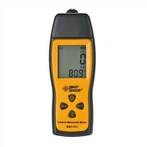The difference between pointer multimeter and digital multimeter
Multimeter is the most commonly used test instrument in the maintenance electrician industry. You must master the use of multimeter and understand the testing principle of multimeter. Electricians engaged in strong and weak electricity generally only use AC and DC voltage and on-off test gears, and rarely use other gears.
We know that maintenance electricians often need to measure the performance of various electronic components. They need to use the resistance, DC voltage, AC voltage, capacitance, diode and other gears of the multimeter to measure and determine the faulty components.
It is often seen that maintenance electricians use pointer multimeters. Is it to deliberately show their deep maintenance experience? Or is there another reason? What is the difference between pointer multimeter and digital multimeter? Let me tell you:
As for the difference between the two meters, it is really a matter of opinion. The opinions are different. Today I will mainly talk about my opinion and hope you can give me some advice.
The pointer multimeter uses a very sensitive magnetoelectric DC ammeter as the meter head. During the test, when the DC current flows through the coil wound around the magnet, the coil is subjected to force in the magnetic field of the permanent magnet and drives the pointer, so that the pointer stays at a certain position, and the corresponding reading is given on the corresponding dial. Mechanical zeroing is used to correct the pointer zero position error, and the pointer is adjusted to zero when there is no signal.
Advantages: The pointer multimeter is a passive device (that is, it can work without a battery installed in the multimeter), with high sensitivity and fast response speed. Through the swing of the pointer, the physical properties of the components under test can be intuitively displayed.
Disadvantages: Poor anti-electromagnetic interference ability, inconvenient reading, poor anti-seismic ability, ohm zeroing is required when testing resistance, and only voltages above 0.5V can be tested. The accuracy of testing weak voltage is not enough, and it is not convenient to carry.
The digital multimeter is equipped with an integrated operational amplifier circuit. By sampling the components under test, the test results are input into the internal A/D converter, counter, and then to the logic operation circuit for operation, and then displayed through the display window. Digital multimeters are active devices (the meter cannot work properly without batteries installed). Advantages: high accuracy, especially the test voltage can be accurate to 0.001V (some multimeters), easy to read, strong anti-electromagnetic interference ability, easy to carry.
Disadvantages: slow response speed, cannot accurately test some semiconductor devices, cannot test component leakage, etc.






